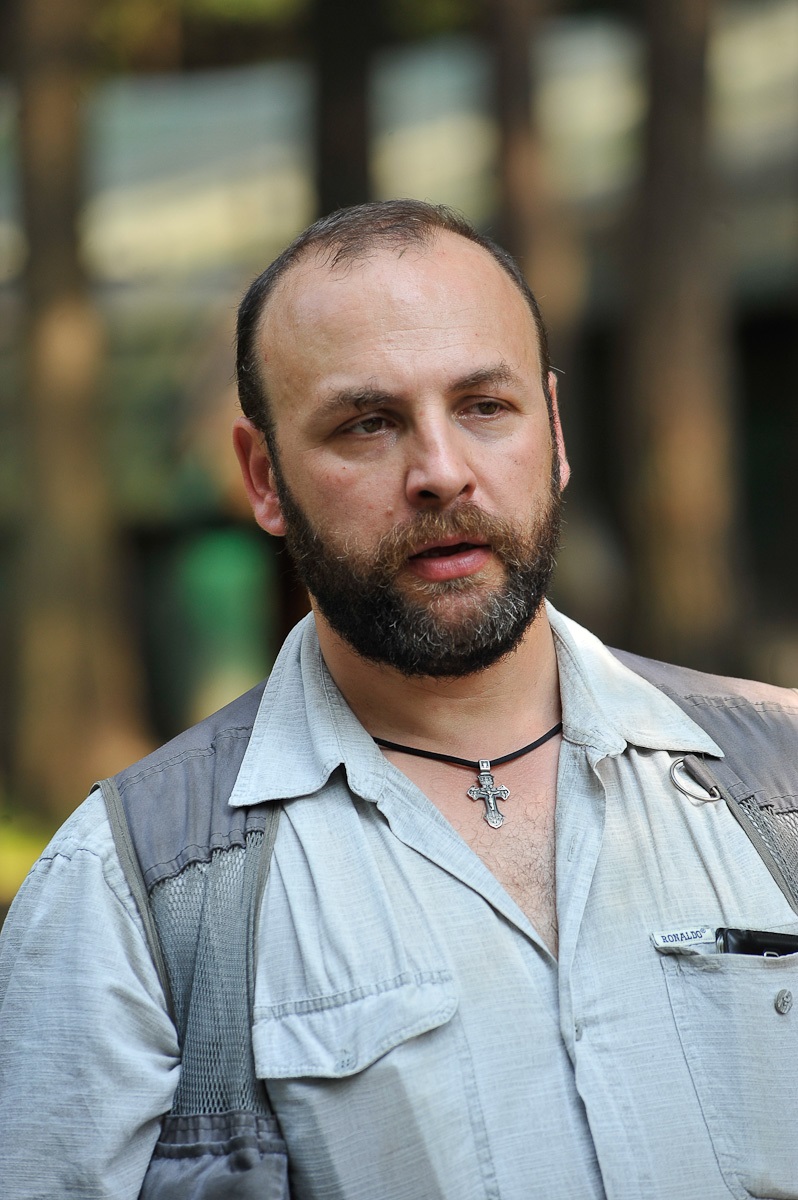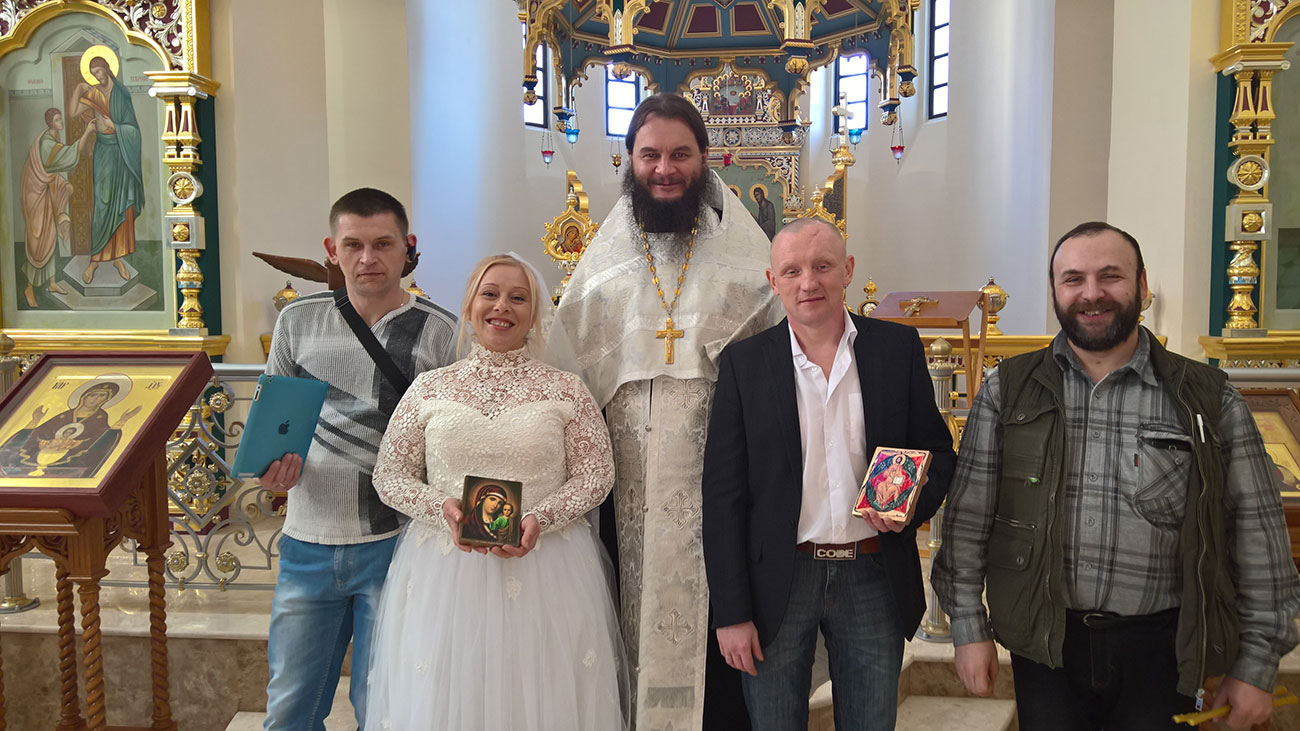
This is a house in the Moscow Region, where a commune of 35 homeless people live.
Olga Ogareva This is a house in the Moscow Region, where a commune of 35 homeless people live. Source: Olga Ogareva
This is a house in the Moscow Region, where a commune of 35 homeless people live. Source: Olga Ogareva
Homelessness is tough in any country, but in Russia it’s particularly tragic. The harsh climate often leads to heavy consumption of alcohol, rapid physical degradation, loss of human dignity and eventually death. There are no official statistics on life expectancy of the homeless, but according to social workers, a homeless person who doesn’t regularly go to shelters and utilize social services will most likely die after just two to five years on the street.
It’s not easy to help these people. Once on the street, they lose not just a roof over their heads, but also the ability to take responsibility for their lives. Yemelyan Sosinsky, an absolutely ordinary man, has never been homeless himself but he has always sympathized with their plight, and now he has a way to get them off the street and restore their dignity.
 Yemelyan Sosinsky. Source: Personal archiveYemelyan had long been searching for a cause. He liked to help people, but it could hardly be called an occupation. He worked as a school counselor and as a mentor to troubled teenagers, but there was no money in it. He tried to start his own business and freelanced as a driving instructor, but his soul was searching for something else. That led Yemelyan to the church, which also turned out to be not enough.
Yemelyan Sosinsky. Source: Personal archiveYemelyan had long been searching for a cause. He liked to help people, but it could hardly be called an occupation. He worked as a school counselor and as a mentor to troubled teenagers, but there was no money in it. He tried to start his own business and freelanced as a driving instructor, but his soul was searching for something else. That led Yemelyan to the church, which also turned out to be not enough.
"Every Christian, in addition to a belief in God, must show it with deeds," Yemelyan thought. "Otherwise, their faith turns out be to be somehow empty."
That was how he began to help people again, homeless people who came to the church.
"We fed them, provided them with medical assistance, washed them and gave them new clothes. We rented housing for them and sent them home. We restored their identity papers and found them jobs."
After two years of much work, he realized it was useless. While he helped the homeless to restore their identity papers and find work, they didn’t want to work. He bought them train tickets home, but they returned. He dreamed they’d live happily ever after, but they died on the street, without changing anything in their lives.
That got Yemelyan thinking. There must be other ways to tackle this problem. Unexpectedly, he found an answer in the teachings of Russia’s St. John of Kronstadt.
In 1872, St. John was still known as the archpriest Ivan Ilyich Sergiyev living in the city of Kronstadt, which is located on an island near St. Petersburg. He was known for helping poor people. Once, in a local newspaper, he urged city residents to set up a workhouse and to buy the goods it produced. When the workhouse finally opened in 1882, it attracted three-quarters of all homeless people in Kronstadt. Yemelyan has decided to revive this practice 120 years later.
To reach one of Yemelyan's shelters, we take a suburban train to the station of Ivanteyevka outside Moscow. That’s where the Noah Shelter is situated. It differs from other shelters in that homeless people here work and take care of themselves.
We get off at a deserted platform with just three other passengers. On one side is a forest and a handful of cottages, on the other, an upscale townhouse development.
Strange as it may seem, homeless people are living on the side where wealthy people live, where the townhouses are. This happened by accident. The owner of a three-storey house was looking for a tenant. In Russia, because of the long winter, it’s easy to rent out a house in the country in the summer, but not during the off-season when supply is much greater than demand.
When Yemelyan offered to rent the house on behalf of homeless people for the entire year at $1,500 a month, the owner decided to take the risk. It turned out that when living under one roof in a commune the homeless act very sensible and responsibly; they pay rent on time and behave well. The owner even built another house and rented it to Yemelyan too.
From the outside, this light yellow cottage is no different from the others in the village. All of them, except one, are home to well-off families. In that one special house there are 35 homeless people. In a sense, however, they also form a family.
The big room on the ground floor doesn’t resemble a traditional living room - there are several bunk beds in the right corner and a cabinet with icons on the wall between the windows. Opposite is a TV set. Today is a day off, so the residents are watching everything that is on: news, talk shows, and movies.
"My story is very simple," says Yuri, a gray-eyed man of about 50. "I lost everything because of drinking. Everything I had, I lost it to drinking."
"Alcoholism!" his neighbor chuckles. "So what? I can laugh because I’m laughing at myself. I also lost everything: my home, my family! So can't I laugh?"
A third man, in his early 60s, sits by himself, demonstratively reading a newspaper. Suddenly he smiles from behind his glasses and shakes his head.
"A social worker approached me at the Kazansky railway station in Moscow and asked if I’d like to live in a shelter," Yuri continues. "I agreed, and I've now been here for six months."
The windows in the kitchen have steamed up: barley porridge with meat is cooking for dinner. A 60-liter pan takes up the entire cooker, with all four burners on. A note on the laundry door says: "Brethren, on Sunday only work clothes are washed!"
 Yemelyan Sosinsky (R) at the wedding of his charge. Source: Personal archive
Yemelyan Sosinsky (R) at the wedding of his charge. Source: Personal archive
The task of providing the brethren with work falls on the shoulders of Alyona, the assistant and wife to the shelter director. She met her husband in another shelter, where both were on a rehab program after giving up drugs. Every day, Alyona calls local construction companies, factories and municipal services providers. For an eight-hour day of work, the pay is about 2,200 rubles ($40).
The shelter’s economy is simple: workers receive half their wages and have full board. They get accommodation, three meals a day, clothes and assistance in restoring their identity papers. The other half of their income goes to pay the rent, buy food, medicines and basic household essentials, as well as to contribute to the maintenance of social homes - shelters for the elderly, disabled people and women with small children.
"From the start, our calculation was that if a shelter manages to earn 400,000 rubles ($7,200), it will break even," explained Yemelyan Sosinsky. "Even if there’s no profit, at least all the bills are paid. That calculation was for about 40 people, including 20 residents who work, another 20 who do household chores, and several dependents. If there is 400,000 [rubles] a month, that’s enough to cover the wages, food, and the rent - everything. "
Since 2011, Yemelyan has opened 10 such establishments, giving shelter to able-bodied men who go to work every day, and two social homes for disabled people and women with children. With these 12 homes, Yemelyan now takes care of some 700 people, 250 of whom are old or disabled, or women with children. The main problem is finding alternative means of income.
"For now, unfortunately, the entire organization survives thanks to hard physical labor at construction sites," said Yemelyan. "Not all homeless people can endure it with ease, because practically all have health problems. Ideally, it’s necessary to have different types of work: someone could, for example, make envelopes, or do intellectual work."
Yemelyan is worried that the shelters have become a successful project, and he keeps fretting about the fact that his director's salary comes from the same fund that people in his care fill. At least his wife has calmed down: she used to complain that for years he had been working with homeless people, spending everything he earned on them. Now, she has nothing to complain about.
The road runs through the forest and ends at a red brick castle – it’s another house that Sosinsky rents for his charitable foundation. The owner built it as a country hotel, but something didn’t work out and the picturesque house under the pines became available for rent. Now it’s home for those who can’t take care of themselves: the sick, the old, and women with small children.
Meals for everyone are prepared outdoors in a field kitchen. In addition to breakfast, lunch and dinner, there’s also a break for a mid-afternoon snack and afternoon rest. People here are not the strongest, but everyone is expected to contribute however they can: some take care of cattle, others clear paths. The strongest help at the church and a children's home.
There’s a separate kitchen for women with children. Nastya and Nina are making vareniki. Nastya is from Ukraine and Nina is from Tajikistan. Both have babies, and each has a history of betrayal and miraculous salvation. Here at the shelter, Nastya met a man with whom she fell in love, married him and gave him twins.
"Soon I’ll receive my maternity capital," says Nastya, overjoyed. "I'll buy a house!"
"And why don't you say that your husband will soon become the head of a new social shelter?" asks an assistant to the head of the shelter, who also used to be homeless but managed to turn his life around.
But Nastya only smiles.
"I am dying for some vareniki!" says Olga, appearing from behind the curtain, where there’s a small sewing workshop. For half a day already, Olga has been sewing work mittens and bed sheets for the shelter. She is glad they’re working for themselves.
"If you want, we'll make some vareniki for you too," says Nastya. "Just peel some potatoes, as we’re running out."
As Olga is peeling potatoes, she tells us that if it hadn’t been for this shelter she’d have been dead: six months ago, out of despair, she decided to commit suicide. As winter was approaching, she found herself on the street, with no one to turn to for help. Some strangers brought her to the shelter, and the doctor diagnosed her with pneumonia. She was taken to the hospital and had a tracheostomy – a procedure whereby a special tube is inserted into a patient's throat to help with breathing.
"See?" Olga says enthusiastically. "I even have a scar!"
It’s hard to imagine that anybody could take joy in having a tracheostomy scar: unless it’s the joy of inadvertently finding a life that had been almost lost.
If using any of Russia Beyond's content, partly or in full, always provide an active hyperlink to the original material.
Subscribe
to our newsletter!
Get the week's best stories straight to your inbox